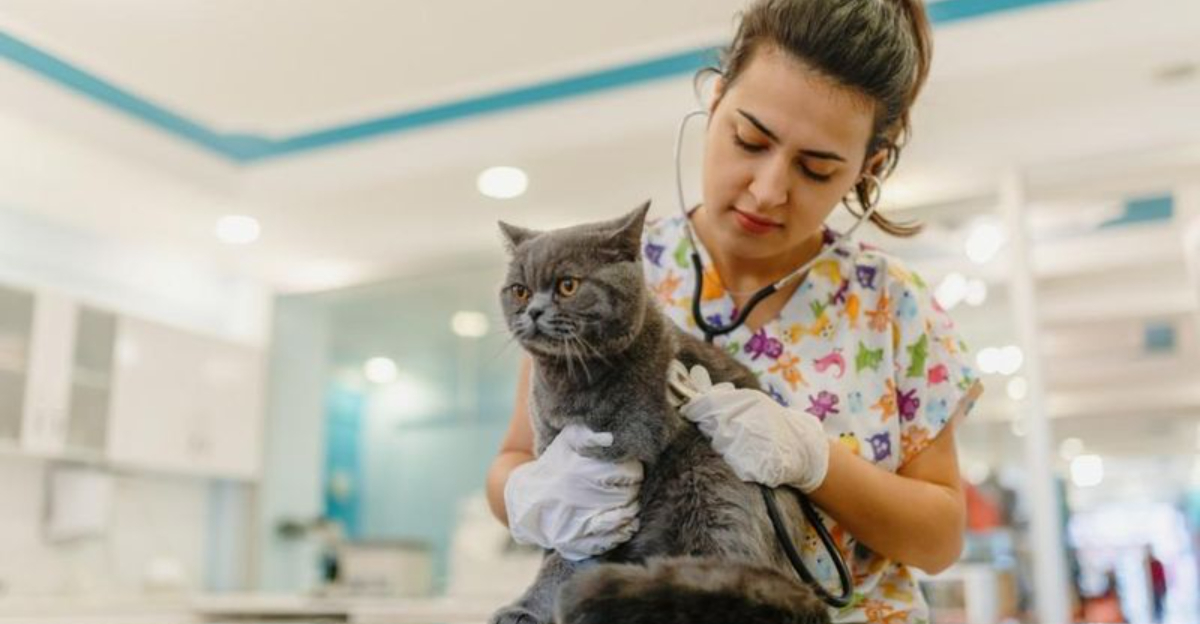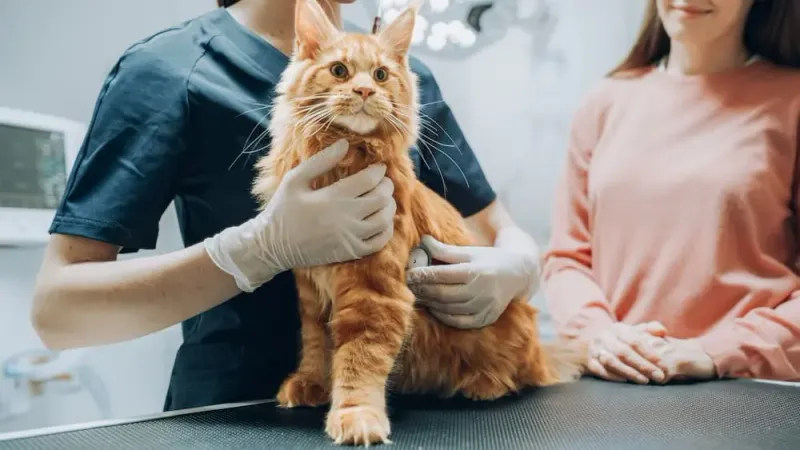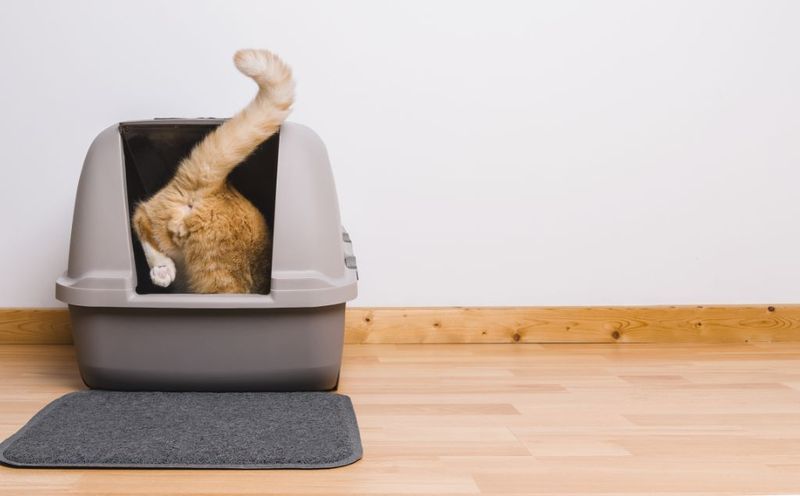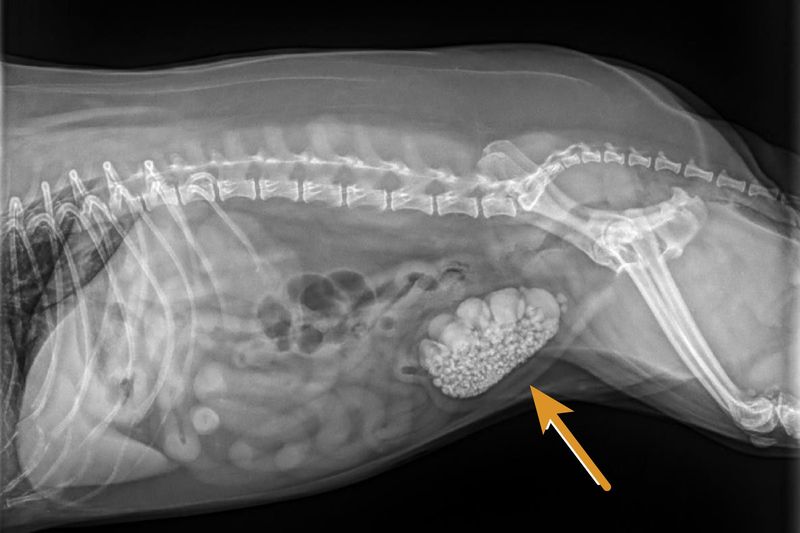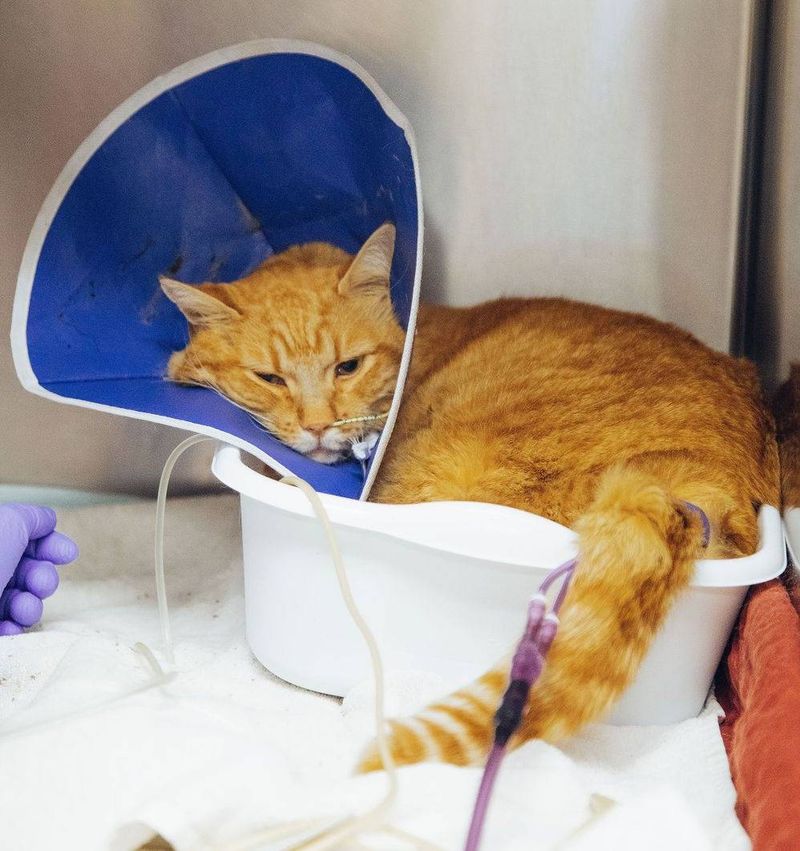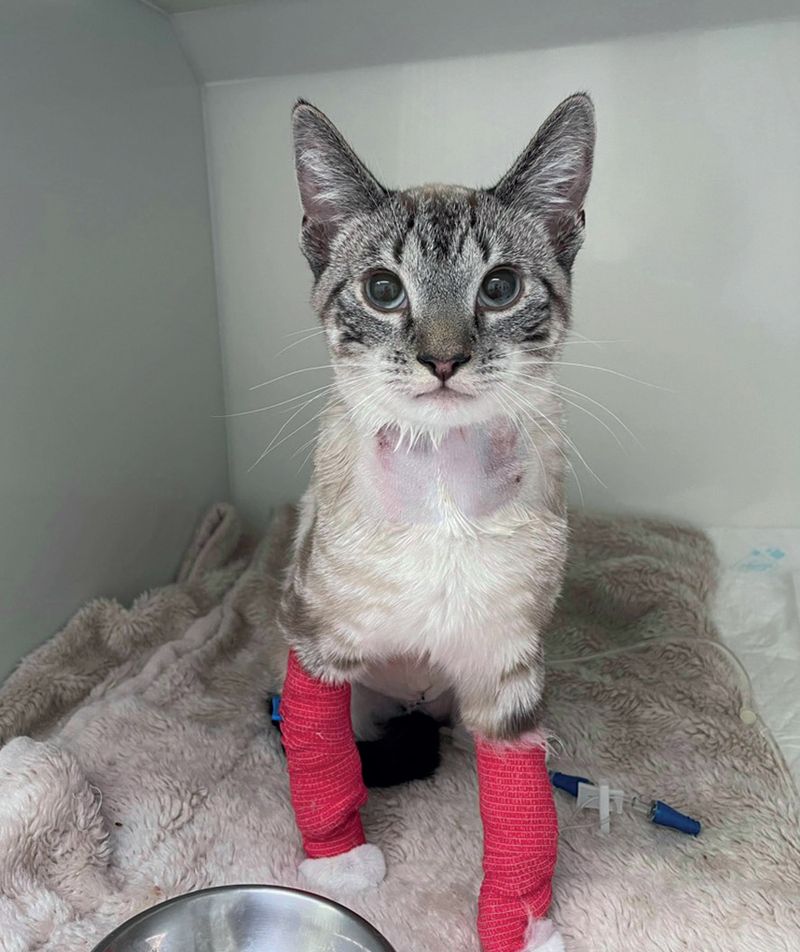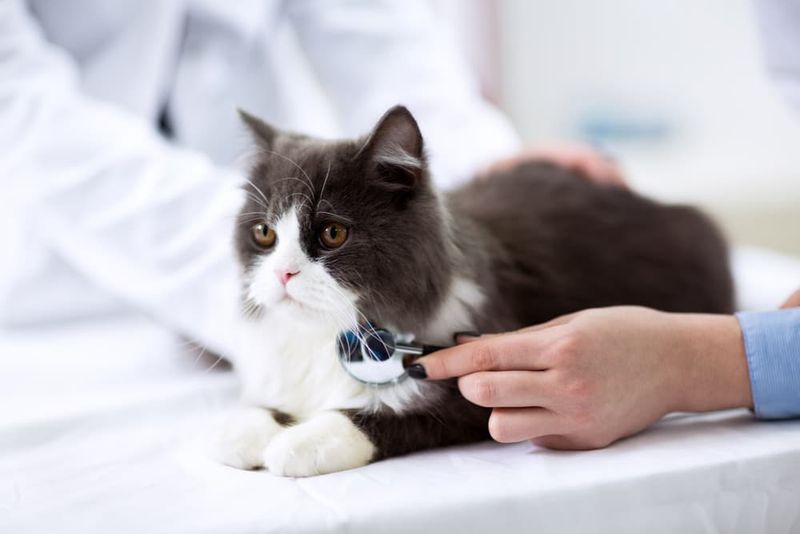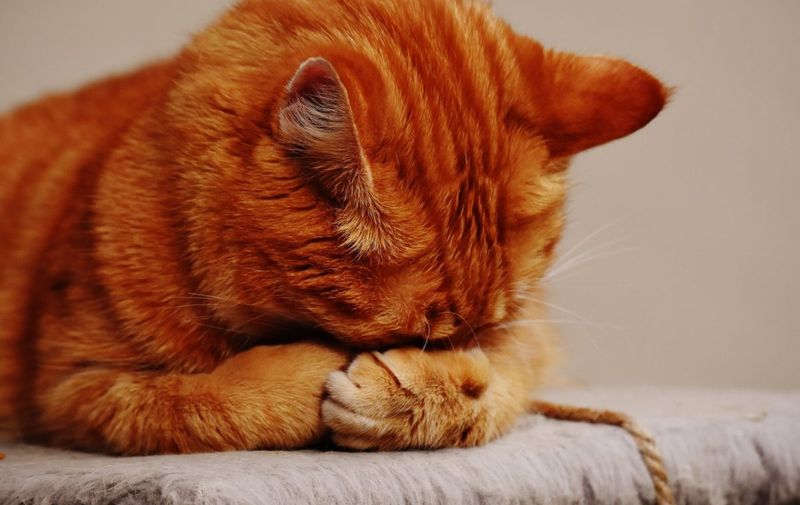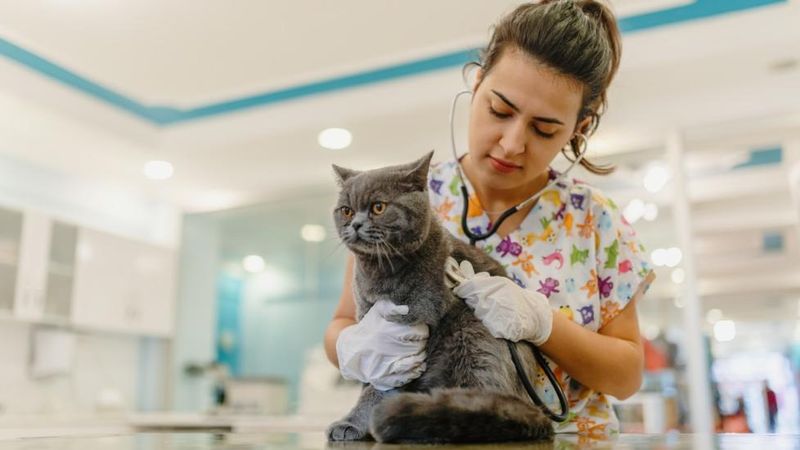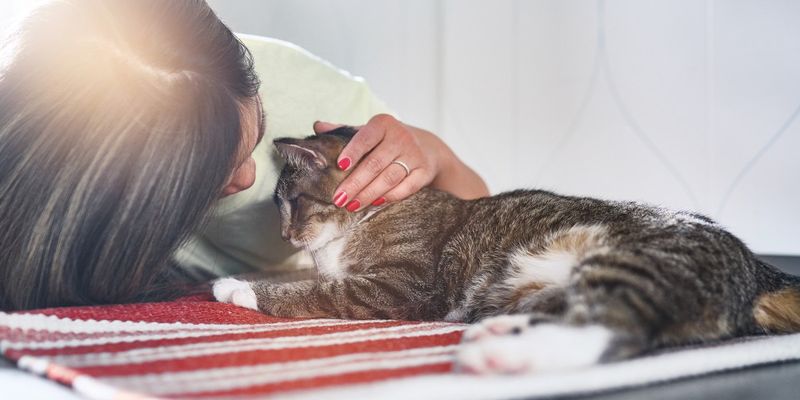📖 Table of Content:
Finding blood in your cat’s pee can be both shocking and deeply concerning. While it may be tempting to hope it’s a one-time issue, hematuria— the medical term for blood in urine—usually signals an underlying health problem that needs immediate attention. Cats often hide pain or discomfort, which makes visible signs like this even more critical to address without delay.
Understanding the potential reasons behind this symptom can help you act quickly and seek appropriate care. Some causes are relatively simple to treat if caught early, while others could be serious or even life-threatening. Whether it’s related to infection, inflammation, or structural issues in the urinary tract, the sooner you identify the cause, the better the outcome for your feline friend.
This guide breaks down nine possible causes of blood in your cat’s urine. Each condition varies in severity and treatment approach, but all of them require a veterinarian’s input. Read on to better understand what might be happening with your cat and how to respond effectively.
1. Urinary Tract Infection (UTI)
Among the most common culprits, a urinary tract infection can lead to visible blood in a cat’s urine. These infections are typically bacterial and irritate the lining of the bladder and urethra. Cats with UTIs may also urinate more frequently or cry out in pain during urination. In some cases, they may start having accidents outside the litter box. Early diagnosis is crucial, as untreated infections can ascend to the kidneys. Veterinarians usually prescribe antibiotics, and improvement is often seen within days. While UTIs are more frequent in older or immune-compromised cats, they can affect felines of any age.
2. Feline Lower Urinary Tract Disease (FLUTD)
This term doesn’t refer to a single illness, but rather a range of disorders affecting the bladder and urethra. Symptoms often mirror those of other conditions: straining to urinate, frequent urination, and bloody urine. FLUTD can be idiopathic, meaning no specific cause is found, which makes management tricky. Stress, obesity, and dehydration are considered significant risk factors. Environmental changes, like a new pet or moving house, can sometimes trigger flare-ups. Treatment often involves dietary changes, increased water intake, and stress reduction. Even though it’s common in younger and middle-aged cats, FLUTD can become a chronic concern.
3. Bladder Stones (Urolithiasis)
Crystals or stones forming in the bladder can scrape the bladder walls, causing bleeding. Cats suffering from bladder stones may show discomfort while urinating or lick their genital area excessively. Some stones are small enough to pass naturally, while others require surgical removal or dissolution through prescription diets. Diagnostic imaging, such as X-rays or ultrasounds, helps pinpoint the presence and size of the stones. If left untreated, these stones can lead to urinary blockage, particularly in male cats. Recurrence is possible, so long-term prevention through specialized food may be necessary. Prompt intervention can prevent severe complications and relieve your cat’s pain.
4. Urethral Obstruction
In male cats especially, the narrow urethra can easily become blocked by crystals, mucus plugs, or stones. When this occurs, the cat cannot urinate, leading to a dangerous buildup of toxins. The pressure this creates may rupture the bladder or cause internal bleeding, which shows up in the urine. Immediate veterinary care is required, often involving catheterization and IV fluids. Without treatment, this condition can become fatal in as little as 24 to 48 hours. Recovery may involve long-term diet changes and increased water intake to prevent recurrence. It’s one of the most critical emergencies in feline medicine and should never be ignored.
5. Bladder or Urinary Tract Trauma
Physical injury is a lesser-known but significant cause of bloody urine in cats. A fall from a height, blunt force trauma, or even aggressive play can damage internal structures. Such injuries might not be immediately obvious from the outside. Behavioral changes like hiding, flinching, or sudden aggression may be early signs. Blood in the urine may appear shortly after the incident or be delayed by several hours. Depending on severity, treatment may involve rest, pain relief, or surgery. Monitoring your cat’s environment and ensuring safety indoors can help minimize the risk of traumatic injuries.
6. Cancer or Tumors
Although rarer than other causes, tumors in the bladder or urinary tract can lead to persistent or intermittent bleeding. These may be benign or malignant, with transitional cell carcinoma being the most common urinary tract cancer in cats. Symptoms often mimic those of infections or stones, making diagnosis challenging without imaging or biopsy. Older cats are more frequently affected, and blood in the urine might be accompanied by lethargy or weight loss. Treatment options vary depending on the type and stage but may include surgery, chemotherapy, or palliative care. Early detection significantly improves the prognosis. Veterinary visits should be more frequent for aging cats to catch issues like this early.
7. Feline Idiopathic Cystitis
Stress-induced inflammation of the bladder lining, known as idiopathic cystitis, is a leading cause of hematuria in young cats. The condition is labeled “idiopathic” because no infectious agent or physical cause is found. Environmental stress, such as moving, boredom, or household tension, can trigger flare-ups. Alongside blood in the urine, affected cats may urinate in unusual places or vocalize more often. Management usually includes stress reduction techniques, increased hydration, and sometimes anti-inflammatory medications. Pheromone diffusers and interactive play can make a significant difference. While not life-threatening, the condition can recur if underlying stressors persist.
8. Kidney Disease
Chronic kidney disease affects a cat’s ability to filter waste and can lead to various complications, including blood in the urine. Over time, the kidneys become less efficient, and their delicate structures may become damaged. Cats with this condition often show signs of increased thirst, weight loss, and reduced appetite. Hematuria may appear during flare-ups or in later stages of the disease. Routine bloodwork and urinalysis can help detect kidney issues early. Treatment usually involves supportive care such as a kidney-friendly diet, hydration, and medications to manage symptoms. Though incurable, early management can greatly improve a cat’s quality of life.
9. Blood Clotting Disorders
Less common but still serious, clotting abnormalities can result in spontaneous bleeding, including within the urinary tract. These may be caused by toxins like rodenticide, genetic conditions, or certain infections. In such cases, blood may appear in multiple areas, not just the urine. Affected cats might bruise easily or bleed excessively from small wounds. Diagnosing a clotting disorder involves blood tests and sometimes imaging to rule out internal bleeding. Treatment depends on the cause and might involve vitamin K, plasma transfusions, or treating the underlying disease. Timely identification is essential to avoid life-threatening complications.
